Culverts | Materials Used In Culverts, 6 Types & Advantages
Culverts are tunnel-like structures which are constructed to provide cross drainage or to take electrical or other cables from one side to other and are constructed below roadways or railways and by soil or ground, these are totally enclosed.
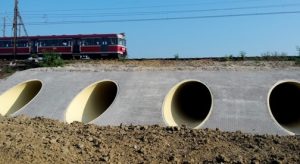
On hydraulic, water surface elevation, and roadway height, and other conditions, the design of culvert is based and for water flow, in a controlled way, these are used.
The culverts also may act as a bridge for traffic to pass on it and in many shapes such as round, elliptical, flat-bottomed, pear-shaped, and box-like constructions, culverts are available.
Types of Culverts:
There are the following types of culverts such as;
- Pipe culvert
- Pipe-Arch culvert
- Box culvert
- Arch culvert
- Bridge culvert
- Metal box culvert.
Pipe Culvert:
The most common type of culverts is pipe culvert due to easy installation and competitive price. In different shapes such as circular, elliptical, and pipe arch they are available and their shapes depend on on-site conditions.
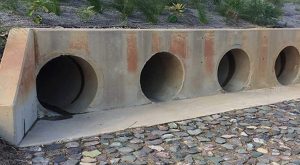
These culverts may be of single in number or multiple and the larger diameter culvert is installed if the single pipe culvert is used.
Pipe Culvert Advantages:
There are the following advantages of pipe culverts such as;
- By proper mix design, thickness, and reinforcement it can be constructed of any desired strength.
- Pipe culverts are economical.
- Pipes of this culvert can withhold any compressive stresses and tensile stresses.
- The water crosses from under the structure.
Pipe-Arch Culvert:
For large waterway opening where fishes can be provided with a greater hydraulic advantage arch culvert is suitable and they are definitely much artistic and provide low clearance.
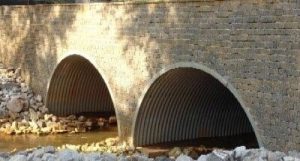
For sites where the headroom is limited, pipe arches are particularly useful and can also be provided in multiple numbers based on the requirement.
Advantages of Pipe-Arch Culvert:
There are the following advantages of these culverts such as;
- The pipe-arch culvert has limited headroom conditions.
- At low flow, improved hydraulic capacity.
- Aesthetic appearance and shape.
- Easy to install and lightweight.
Box Culvert:
These are made up of concrete and especially, reinforced concrete and a dry surface needed for installing it and it is the most challenging part in constructing a box culvert.
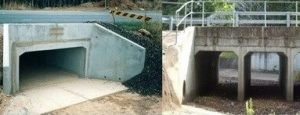
Water direction can be changed when a large amount of water is expected due to the strength of the concrete floor and this feature makes box culverts, one of the most commonly found types.
Advantages of Box Culverts:
There are the following advantages of the box culvert such as;
- It is very simple in construction and is a rigid frame structure.
- For endless streams where scrub depth is not outstanding, it is suitable.
- On the soil the bottom slab of the box culvert reduces pressure.
- Due to their rigidity and monolithic action box culverts are economical and not required separate foundations.
Arch Culvert:
From metal, stone masonry, concrete, RCC, etc an arch culvert is made and construction does not take a lot of time. Without disturbing the water current, it can be installed and the natural integrity of the wash bed is maintained by this culvert.
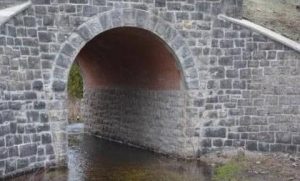
Advantages of Arch Culvert:
There are the following advantages of arch culvert such as;
- It is cost-saving and an accelerated construction schedule.
- This culvert has greater hydraulic efficiency.
- Design-build advantage and pleasing aesthetics.
Bridge Culvert:
This type serves a dual purpose and it acts both as a culvert and as a bridge and is constructed on rivers and canals generally rectangular in shape.
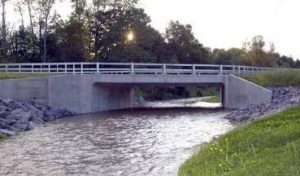
Under the ground level, a foundation is laid and on top of the series of culverts, the pavement surface is laid. For multi-purposes, this can be used.
Advantages of Bridge Culvert:
There are the following advantages of bridge culvert such as;
- These are very strong.
- It allows traffic to pass on it.
- The foundation of this type of culvert is highly strong.
- Most expensive river crossings.
Metal Box Culvert:
This culvert is the economic alternative of the bridge and from a standard structural plate or deep-corrugated structural plate, these bridges are manufactured. Maintaining the same road grade level they are the perfect bridge replacement.
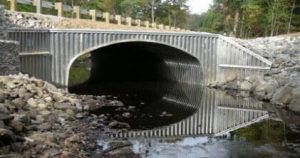
Advantages of Metal Box Culvert:
There are the following advantages of metal box culvert such as;
- Easy installation and a shorter construction period.
- It has good Deformation ability and durability.
- It has a long service life.
Materials for Culvert Construction:
From a pipe, reinforced concrete or other material and surrounded by soil, a culvert may be made and the selection of material depends on;
- Strength of structure.
- Hydraulic efficiency.
- Local construction practices for installation.
- Durability and Cost.
For culvert construction the main materials are:
- Steel
- Aluminum pipes
- Concrete &
- High-density polyethylene.
Steel:
The steel is mainly Structural Steel Plate (SSP) and Corrugated Steel Pipe (CSP) that is used in constructing culverts.
- Structural Steel Plate (SSP) is used to construct metal box culverts and arch culverts and provides greater corrosion resistance and is stronger. To make a good culvert these steels meet the requirement and for use, in members, where added durability and strength management is critical the SSP specification is intended primarily.
- Corrugated Steel Pipes (CSP) are used in pipe culverts where the structure of the culvert is round in shape and due to the strength and the flexibility of the pipe, these pipes will not break down under the impact of loads. To fit certain requirements CSP products offer the greatest flexibility.
Aluminum Pipes:
From structural plates or from a single piece of aluminum, aluminum pipes can be constructed, and to construct metal box culverts aluminum is mainly used.
There are following advantages of aluminum pipes such as;
- Lightweight and Corrosion Resistance.
- Ductility and Recyclability.
Concrete:
Concrete culverts are found in both rural and urban areas and it has a lower environmental impact with strength and durability.
There are the following advantages such as;
- Increased cost savings.
- The installation is quicker.
- Lower environmental impact.
High-Density Polyethylene:
For culvert large ratio of strength and durability high-density polyethylene is used and high-density polyethylene provides;
- Lightweight & greater impact resistant.
- Weather-resistant & long-lasting.
- For underground delivery of water resistance towards insects and great.
- Nearly into any shape, easily molded.
